The Crown & Game of Thrones’ Costume Designer Michele Clapton
Costume designer Michele Clapton, who won an Emmy for her work on Game of Thrones, swapped the diabolical Lannister family for the Windsors to work on Netflix’s The Crown. We talk to Clapton about why a man’s shirt was one of the most pivotal pieces Claire Foy’s Elizabeth wore, why she hates costumes that look like costumes and how she was drawn back to Game of Thrones.
The Crown is interesting in a lot of ways, one of which is that you are dealing with a living monarch and, as such, there's lots of archival imagery and footage that you can draw from. So how do you approach that? What's the research process and then how much do you use artistic license?
I think the key to this was to research as much as you can and, as you've said, there's so much out there because obviously the subject has been covered so widely. We had a research team attached to this show and then within the costume department we also researched separately. And we just tried to really look at as many pieces as we could from different people- from dressers, from butlers, from footage and just try and build a picture. Because I think the more comfortable and assured you feel within a subject, the more creative you can be and then you can start taking artistic license. Which I think, for me, was really important to do so in this. We had to sort of replicate the essential pieces, like the wedding or the coronation. Those were the things that we might have actually used original footage of, which, actually, I don't think we did in most cases but obviously if we had, the costumes had to match.
And then you can have some fun with the costumes for the scenes during more private moments?
Yes, so we had to move away from the research, just to sort of think and develop the characters that we try to create from within the scripts. We run through the script and just trying to take it a little bit further, you know? It's not a documentary; it's drama. And you're right, it's a living monarch, so I would have felt very uncomfortable if it was hugely derogatory towards her. I thought the script was so good in as much as it explored areas and let you sort of imagine how it might be in that situation. So, I thought it was just incredibly clever and once I'd read the early script, I just thought it was something I really wanted to be involved in.
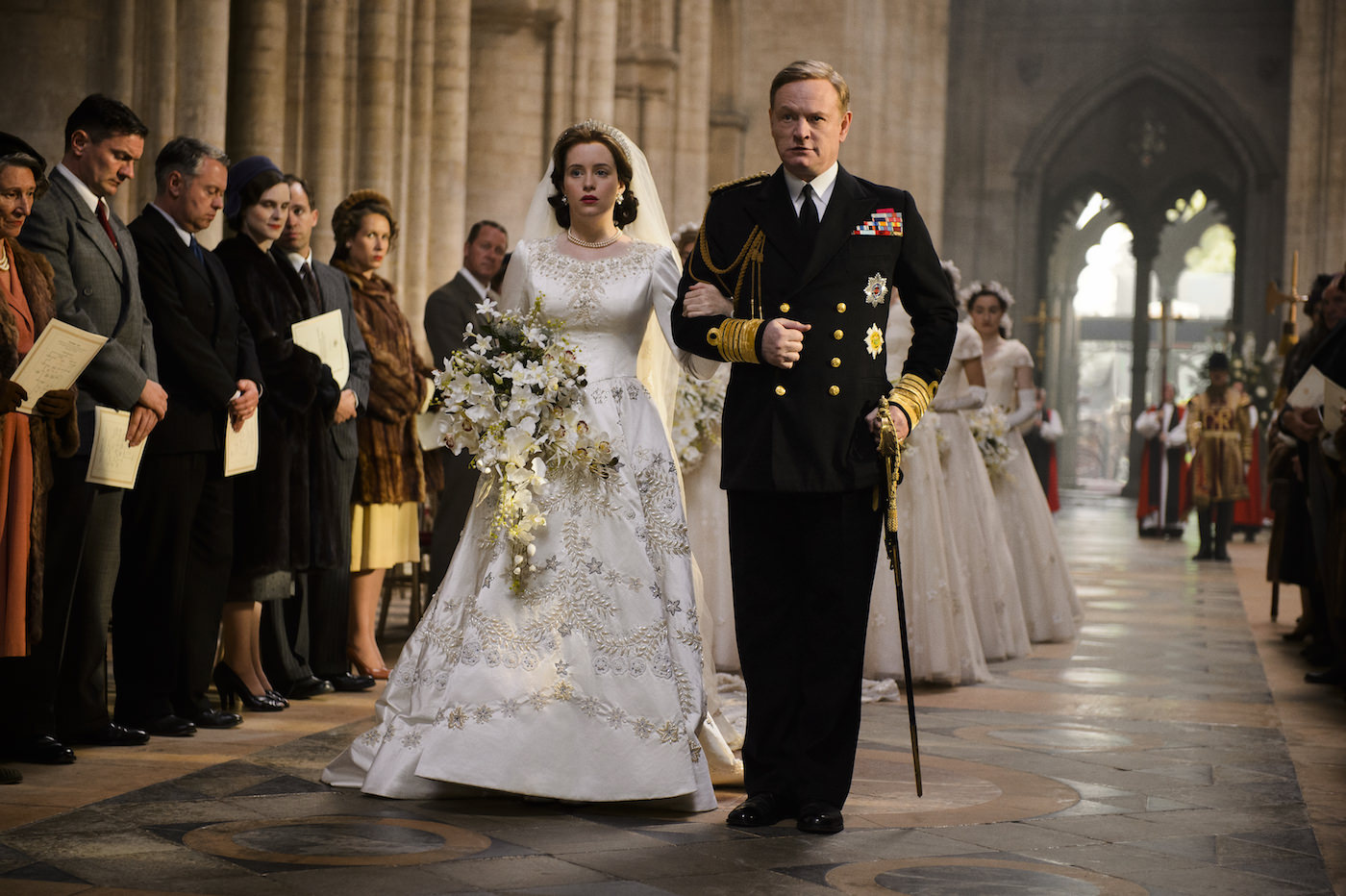
Claire Foy and Jared Harris. Courtesy Netflix.
Because you do see a lot of the personal lives of the monarchs, and they're going through such enormous changes at that time, particularly Elizabeth. Can you think of some examples of how you used her costumes to reflect the changes that she went through in such a short period of time?
Yeah, it was like you said, it was quite an extraordinary journey in what must have been, I think we covered seven or eight years. I think just to try to have costumes to show the influence from initially her mother and then a sense of freedom when she's a young wife. I wanted to see lightness; a lack of formality, really.
It also shows her as a real, fully-formed person. It's a great way to show her spirit and then how she has to control that when she becomes the queen.
It was really important to me to actually in that one scene, I think, when her father has died and she is wearing Philip's shirt, I just wanted to be absolutely the furthest removed from where she will [need to] be at that moment. Sometimes, a shirt as a costume, a man’s shirt is as important as, to me, the wedding dress or the coronation. Because it shows this huge journey that she'll have to go on. And also what she's lost. I loved trying to work out the emotional sense of it all and trying to express that visually. I think it really underpins the actual performance and I think, as costumes should, it should help them. It should create the feeling that they have. Especially because we always film out of sync. So we might be doing a scene from [episode] ten in the morning and then a scene from [episode] one in the afternoon. I do whatever I can do for that actor to create the right mood and feeling for the scene. And it's all guesswork. I mean, honestly, it's, to a degree everything we do is sort of guesswork.
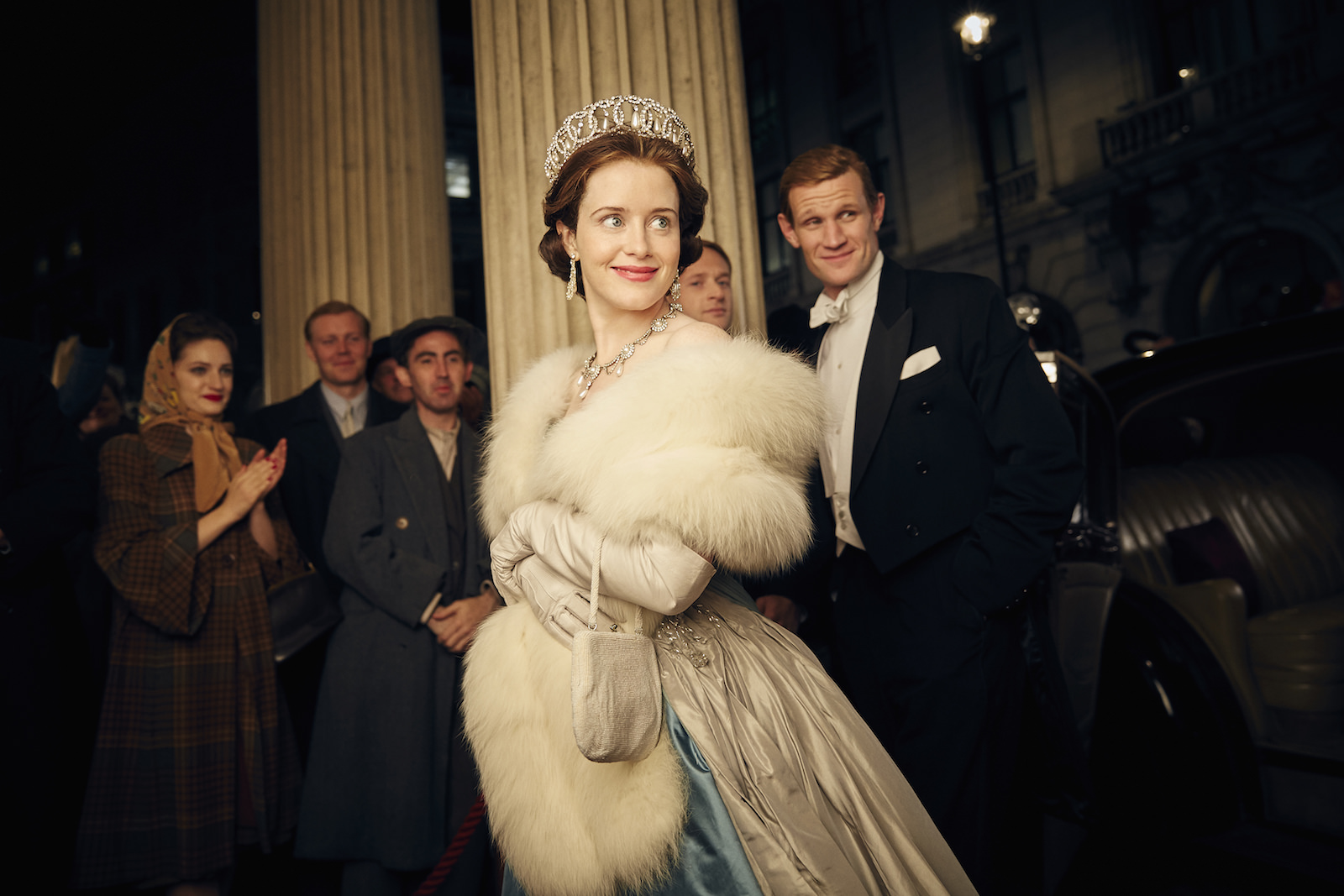
Claire Foy and Matt Smith in The Crown. Courtesy Netflix.
So how did her costumes progress in their style?
Initially her costumes were like armor, they were made incredibly plain. It was the equivalent of a man's suit because she was dealing with men. Almost as if she was hiding behind it. But as she gained confidence you see a prettiness creeping back in. Because everything I looked at and read about her, she liked some sweet things.
She seems quite pragmatic, whereas Margaret's flamboyant and has flair and style.
Exactly. And it was so lovely to explore those two different groups, you know?
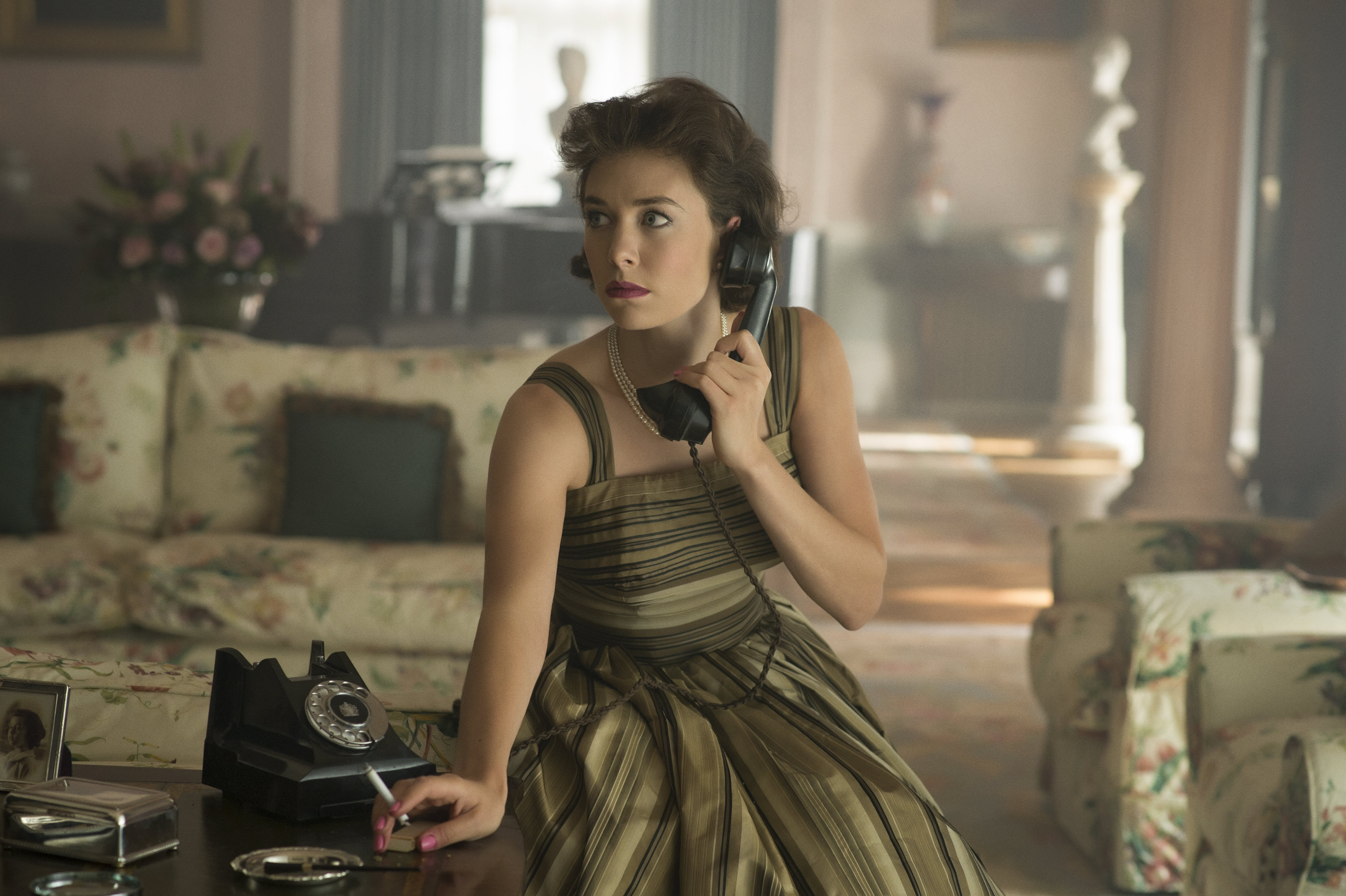
Vanessa Kirby is Princess Margaret. Courtesy Netflix.
It must have been a joy to design Margaret's costumes. Were there some that stood out for you, that you felt were a favorite?
I had great fun with Margaret, I mean, I love her, I love the character, I love the actress [Vanessa Kirby] and there were quite a few I liked. I loved the birthday dress that she wore when she reached the age where she then thought she could marry Townsend and actually she couldn't. And then there was another scene when she was presenting something, standing in for the queen and we put her in this lovely hand-painted and beaded dress and I put really big pockets in the front because I loved the idea that she could jam her hands in the pockets and sort of swagger a bit.
Yes, she did have a bit of a swagger and wore lots of pants and things as well.
Yes, she’d wear bold angular prints and trousers with sling backs, which was lovely, and again it's very different from the route the queen chose. I think Margaret's colour palate was a much more sophisticated palate than the queen’s. We used bright little prints but I was also really desperately keen for the costumes not to overtake everything else and it not to be about the costumes. I wanted them to be correct and have the right fit and not interrupt the story.
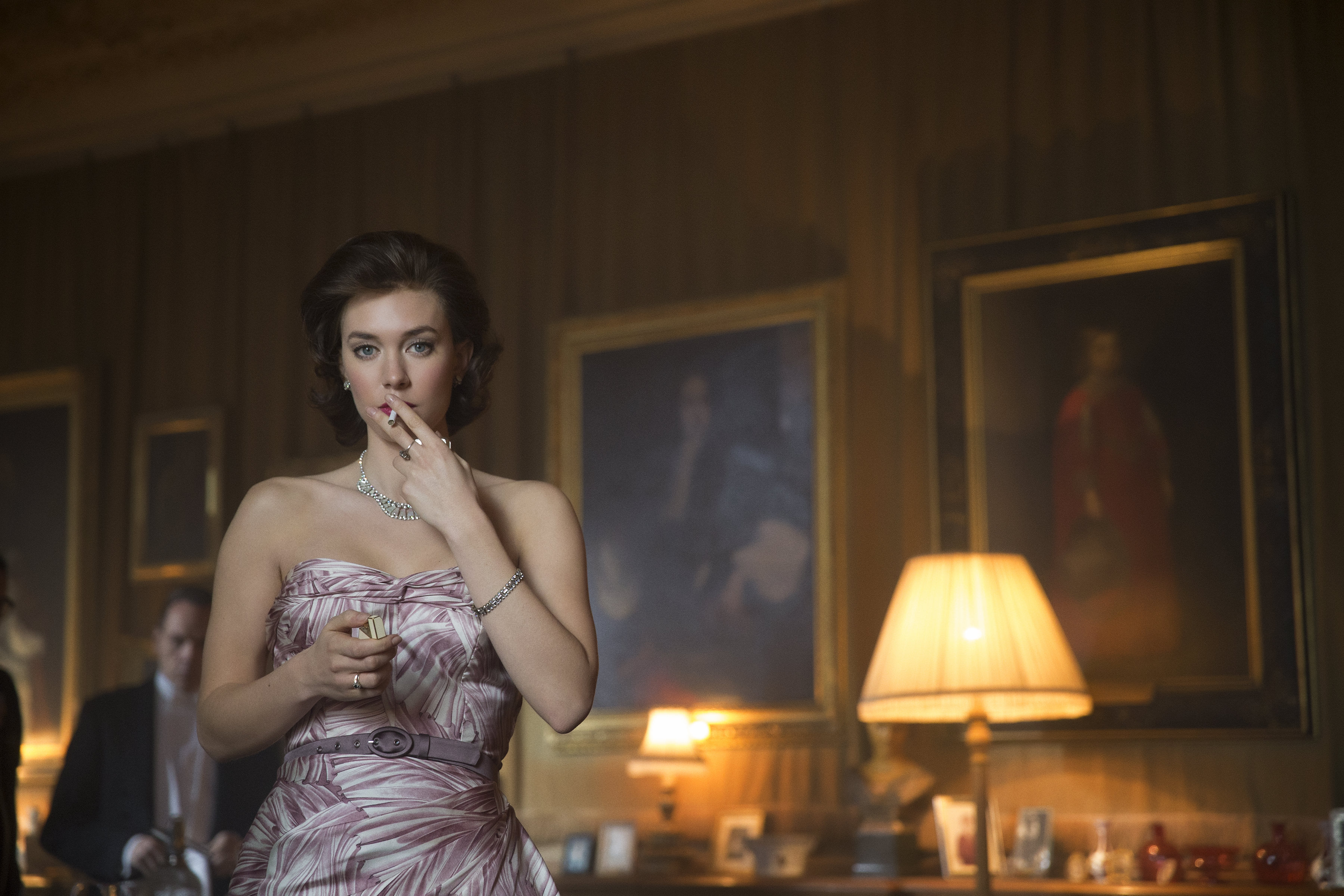
Vanessa Kirby as Princess Margaret. Courtesy Netflix.
Yes, I read somewhere that Stephen Daldry, the director, said he wasn't interested in doing a costume drama. It wasn't about that.
Yeah, and me too, and I think that was really important. I hate costumes that look like costumes. I want them to look like clothes. Which is again why we make those pieces, so that they fit them in a way that is correct, that looks comfortable and that they weren't restricted, unless they have to. I like actors sitting down and being in their costumes. And living in them. Especially on a show like this.
And speaking to that, them not being costumes, would something like the wedding dress and the coronation dress be as intricately made as the actual garment would have been?
Well, I think pretty closely, but that was something I was really keen to do, especially the wedding and the coronation. Those huge set pieces, we really had to nail them, so all the beads were hand-stitched on them and all the headdresses for the bridesmaids were handmade out of wax and paper.
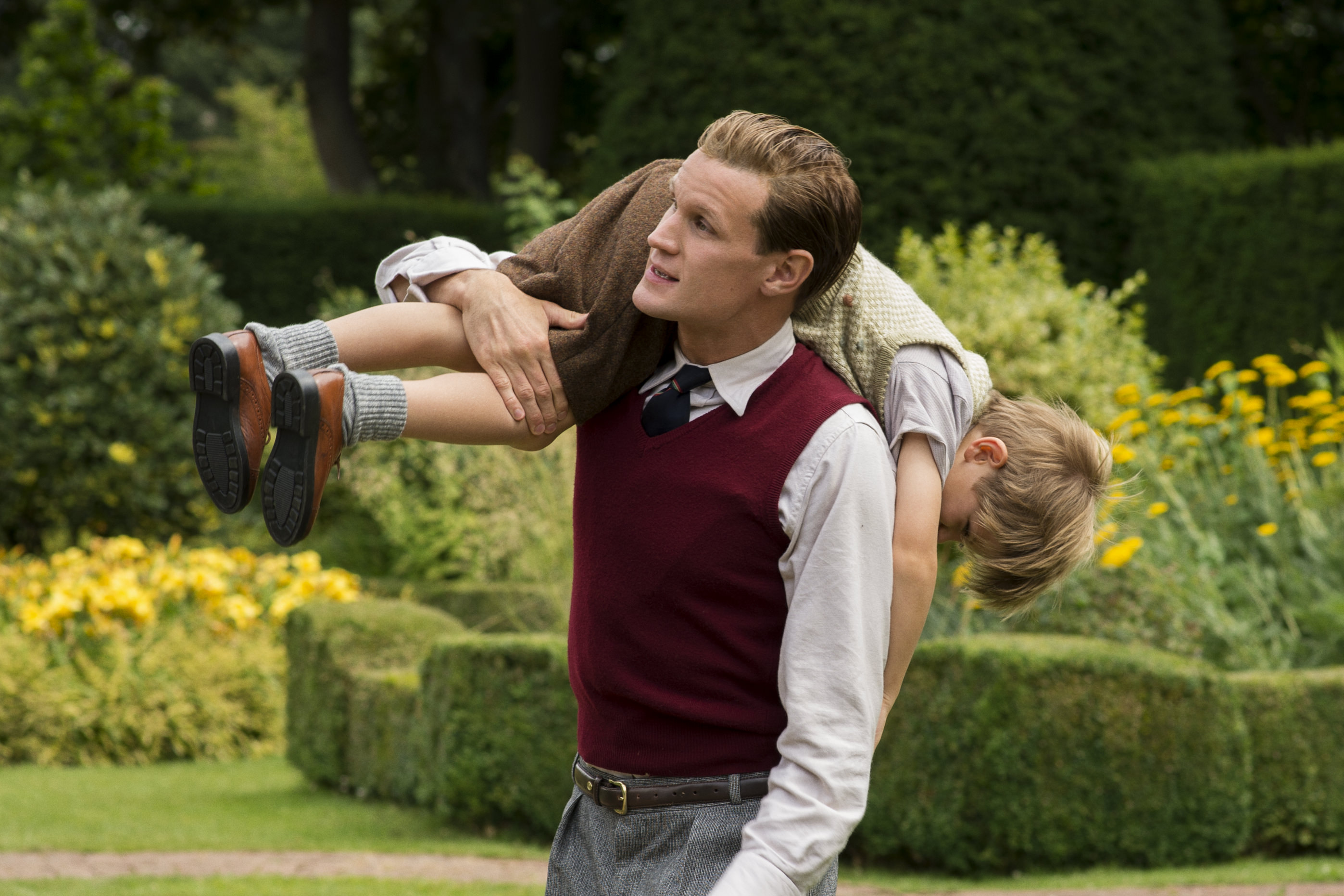
Matt Smith is Prince Phillip. Courtesy Netflix.
Tell me about the jewels. I understand that you can replicate some of them exactly because they're in the public domain, but others you had to change a little bit?
We had permission for some of her pieces but some not so, so we had to change 25% of them. So, I was always selling the little changes to the lawyers and they were like, ‘Do you really need to use it?’ And I’d say, ‘Yes, I bloody need to use it!’ I can't make the costume without that piece of jewellery which is so iconic and so it was frustrating sometimes to do that. It was difficult, but anyway, we got away with it.
I imagine things like that are not things that people generally consider as the kinds of problems that you have to deal with?
I know and I was surprised at how big it became. We were very lucky with The Crown, because of the queen's jewels. That's fine, we could use all of those. But, yeah, it was difficult.
https://www.youtube.com/watch?v=6ottevaCcAw
And so you finished Game of Thrones and you worked on The Crown and then you've gone back to Game of Thrones. What drew you back?
Well, halfway through The Crown, I was asked to go back and design episodes nine and ten. So I did that alongside The Crown, which was very hard. It was so hard because I adore The Crown, but I felt I just needed to see Game of Thrones through. I just thought I have to go back and finish it.
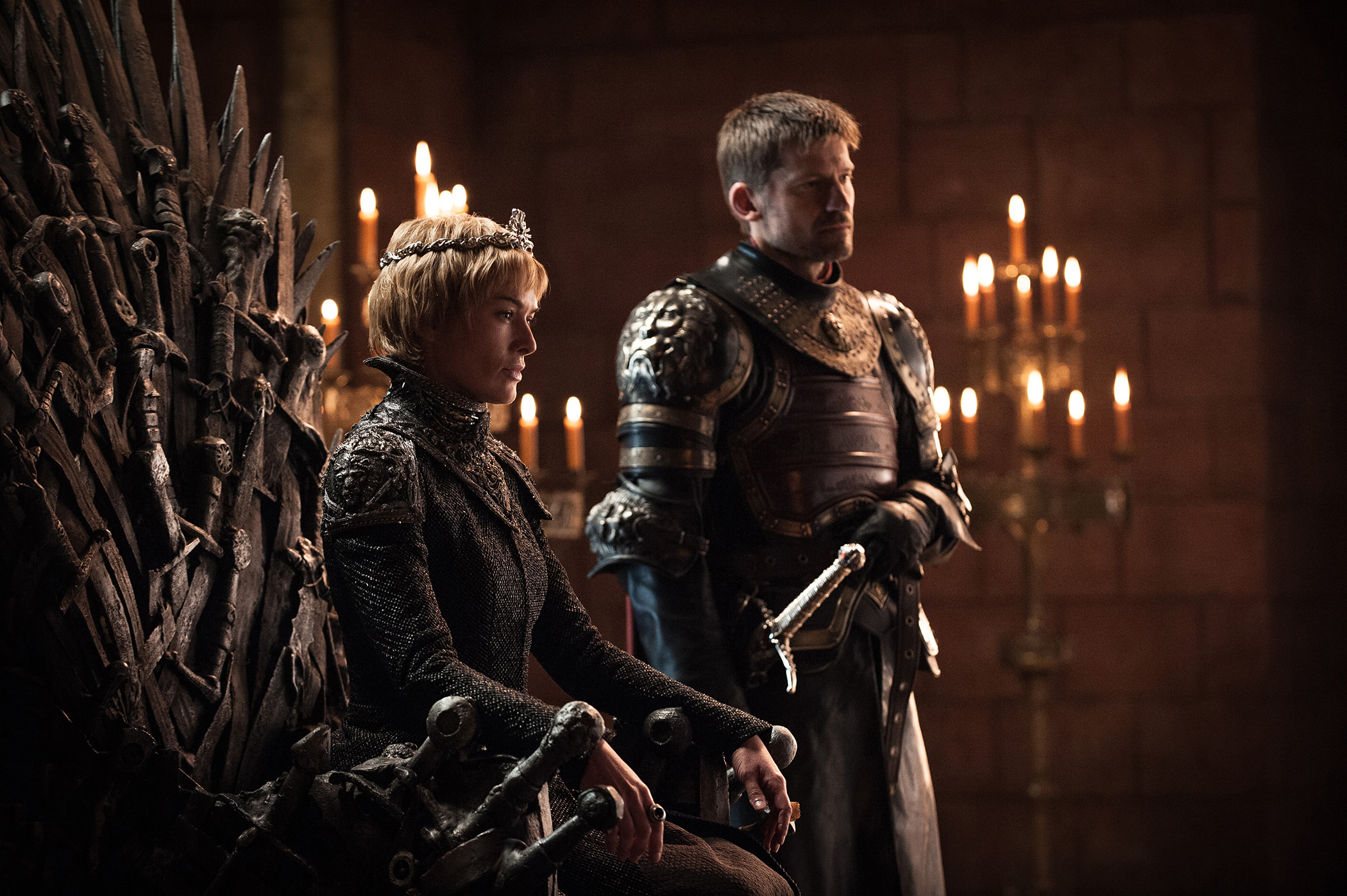
Lena Heady and Nikolaj Coster-Waldau in Game of Thrones. Courtesy HBO.
What's it like going from a fantasy world to a well-documented reality? Do they have different challenges that you both enjoy? Or do you prefer one from the other?
It's really hard but they are different and they're not different. You know, Game of Thrones with all the books…
You have to adhere to the rules in both worlds…
Well, because that's what we choose to do, but with The Crown we obviously want to do it, it is real, so we were much more concerned about making it look as it did, and then not be outlandish about it.
Can you remember how many costumes you made for The Crown?
Oh, I can't remember. We probably made about 60 for the queen and Margaret. There were a lot of costumes and a lot of uniforms and a lot of men's suits. A lot of the livery, that can carry on through the show, so it was worth making. A lot of the religious garb and the stuff for the coronation, we made because we couldn't just find the quality we wanted. But that's the fun of it.
Featured image: Michelle Clapton on the set of The Crown. Courtesy Netflix.



